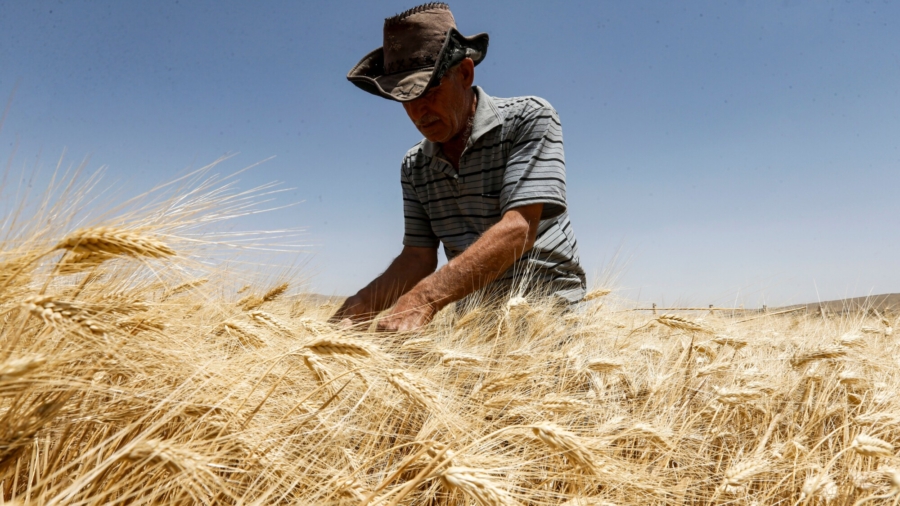ROME—World food prices dipped in May for a second consecutive month after hitting a record high in March, although the cost of cereals and meat both rose, the United Nations’ food agency said on Friday.
The Food and Agriculture Organization’s (FAO) food price index, which tracks the most globally traded food commodities, averaged 157.4 points last month versus 158.3 for April.
The April figure was previously put at 158.5.
Despite the monthly decline, the May index was still 22.8 percent higher than a year earlier, pushed up in part by concerns over the impact of the Russian invasion of Ukraine.
In separate cereal supply and demand estimates, the FAO said it expected global cereal production would drop in the 2022/23 season for the first time in four years, easing 16 million tons from record 2021 levels to 2.784 billion tons.
While the dairy, sugar, and vegetable oil price indices all fell last month, the meat index edged up to hit an all-time high and the cereal index climbed 2.2 percent, with wheat posting a 5.6 percent month-on-month gain. Year-on-year, wheat prices were up 56.2 percent.
FAO said wheat prices were shunted higher by India’s announcement of an export ban, as well as reduced production prospects in Ukraine following the Russian invasion.
The vegetable oil price index dropped 3.5 percent from April, pushed down in part by Indonesia’s decision to lift a short-lived export ban on palm oil.
“Export restrictions create market uncertainty and can result in price spikes and increased price volatility. The decrease in oilseeds prices shows how important it is when they are removed and let exports flow smoothly,” said FAO Chief Economist Maximo Torero Cullen.
The dairy index also dropped by 3.5 percent month-on-month, with the price of milk powders shedding the most because of market uncertainties tied to continued COVID-19 lockdowns in China.
The meat index rose 0.6 percent in May, with stable world bovine meat prices and falling pig meat prices offset by a steep increase in poultry prices.
Issuing its first forecast for global cereal production, FAO predicted declines for maize, wheat, and rice production, while barley and sorghum outputs were seen increasing.
“The forecasts are based on conditions of crops already in the ground and planting intentions for those yet to be sown,” FAO said.
World cereal utilization was forecast to ease in 2022/23 by 0.1 percent from 2021/22 levels, to 2.788 billion tons—the first contraction in 20 years.

